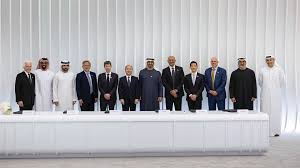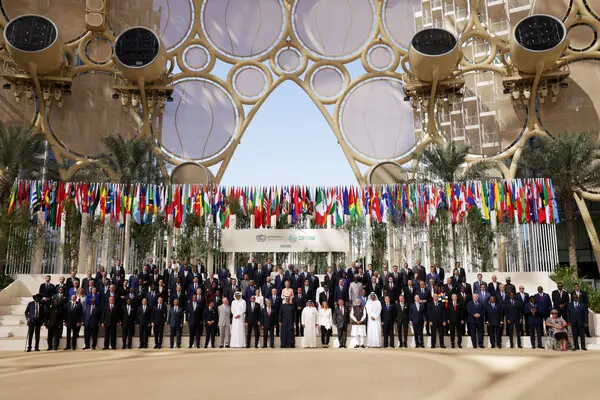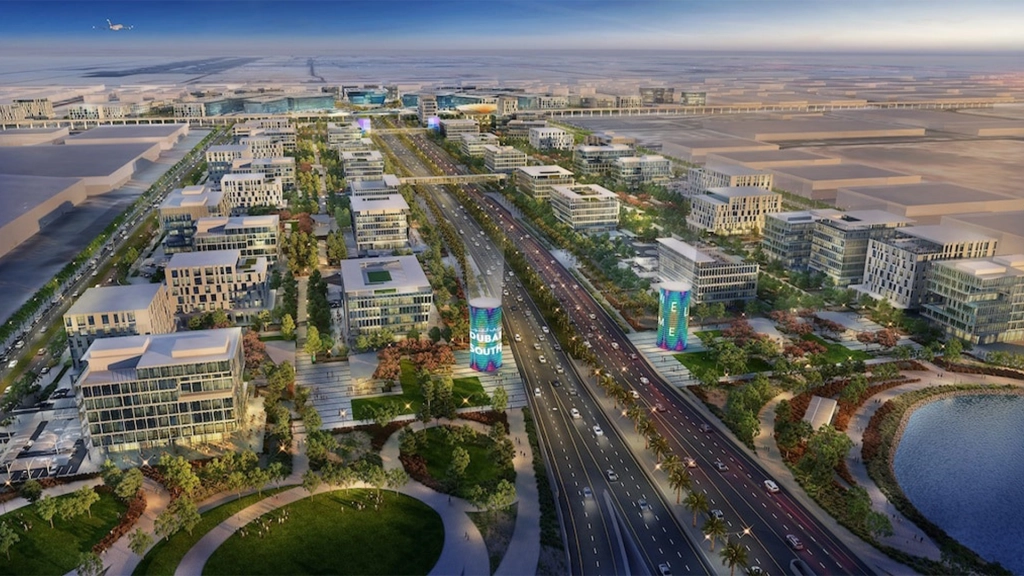Now Reading: UAE and United States Join Forces for Bold Climate Future 2025
-
01
UAE and United States Join Forces for Bold Climate Future 2025
UAE and United States Join Forces for Bold Climate Future 2025

Table of Contents
The global fight against climate change has entered a new chapter with the UAE and the United States deepening their climate partnership. Both nations, though vastly different in geography and economy, are united in their vision to accelerate clean energy, cut carbon emissions, and support the world in achieving net zero goals by 2050. This collaboration is not only reshaping energy markets but also reinforcing international climate diplomacy at a critical time.
A Partnership Built on Shared Commitments
The UAE has emerged as a leader in renewable energy investments, while the United States is one of the world’s largest energy innovators. By working together, both nations aim to pool resources, technology, and funding to support projects that reduce dependence on fossil fuels.
This partnership builds on their earlier joint initiative, the Partnership for Accelerating Clean Energy (PACE), announced in 2022. Through PACE, both countries committed $100 billion in financing and investment to support 100 gigawatts of clean energy projects worldwide by 2035. The partnership covers renewable energy, hydrogen development, nuclear energy, and carbon capture technologies.
What makes this collaboration important is its focus on real-world implementation. Rather than only signing agreements, the UAE and US have actively started investing in projects that deliver tangible results. From solar parks in Asia and Africa to hydrogen initiatives in the Middle East, the partnership is creating a ripple effect far beyond their borders.
Why the UAE is a Key Partner
The UAE has been positioning itself as a pioneer in renewable energy for more than a decade. The country is home to Masdar, one of the world’s largest renewable energy companies, which has invested in projects across more than 40 countries. It has also built Noor Abu Dhabi, one of the largest single-site solar plants in the world.
By working closely with the US, the UAE brings its financial strength and international investment reach to the table. At the same time, it gains access to American expertise, advanced technology, and innovation ecosystems. This combination makes the partnership powerful and unique.
Moreover, the UAE hosting COP28 in Dubai in 2023 reinforced its role as a global platform for climate action. The UAE has committed to net zero by 2050, becoming the first Middle Eastern nation to set such a target. This bold step aligns well with the US ambition to cut emissions by 50-52% below 2005 levels by 2030.
The US Perspective: Technology and Global Influence

For the United States, this partnership reflects a strategic balance between domestic climate action and global leadership. The Biden administration has placed climate at the center of foreign policy, and working with the UAE allows the US to expand its influence in regions that are traditionally dependent on oil and gas.
The US contributes advanced technologies in wind, solar, hydrogen, and carbon capture, while also leveraging its private sector to scale up green solutions. Major American companies are now finding opportunities to collaborate with the UAE in renewable projects across Africa, Asia, and Latin America.
This helps the US strengthen global supply chains for clean energy while creating new jobs back home. It also ensures that climate action is not just about reducing emissions but also about driving economic growth and energy security.
Focus Areas of the UAE-US Climate Partnership
The UAE and United States have identified several key areas to focus on:
- Renewable Energy Expansion – Scaling solar, wind, and geothermal projects worldwide, particularly in developing economies where clean energy can replace coal and oil.
- Hydrogen Development – Exploring green and blue hydrogen as future fuels for industry and transport. The UAE is investing in hydrogen hubs, while the US is advancing hydrogen storage and export technologies.
- Carbon Capture and Storage – Developing large-scale projects that capture CO2 from industries and store it underground, helping hard-to-abate sectors.
- Nuclear Energy Cooperation – Supporting the safe development of nuclear power as a zero-carbon source of electricity.
- Climate Finance – Mobilizing capital from governments, private investors, and development banks to ensure climate projects are not stalled by financial barriers.
Benefits for Developing Nations
One of the most important aspects of the partnership is its support for developing nations. Many countries in Africa, Asia, and small island states struggle to secure funding for renewable energy projects. The UAE-US partnership seeks to fill this gap by providing investment, expertise, and infrastructure.
For example, solar parks in Africa funded through this initiative are already improving energy access, creating jobs, and cutting reliance on diesel generators. Such projects highlight how climate action can also drive social and economic progress.
Challenges Ahead

Despite the strong momentum, challenges remain. Financing such large-scale projects requires long-term political commitment and trust from investors. Geopolitical tensions, fluctuating oil prices, and global economic slowdowns can also affect the speed of implementation.
Moreover, balancing the continued role of fossil fuels in global energy systems with the push for renewables is a delicate issue. Both the UAE and US are still major oil producers, and critics argue that they must accelerate their shift away from fossil dependence.
A Signal to the World
The UAE-United States climate partnership sends a powerful message: climate action is not just about environmental responsibility but also about economic opportunity and global stability. By uniting financial strength, technology, and political will, both nations are setting an example for other countries to follow.
As the world edges closer to 2030 climate deadlines, partnerships like this will be essential. They prove that collaboration, rather than competition, is the key to addressing climate change.
In many ways, the UAE and US are building a bridge between developed and developing economies, ensuring that the green transition is inclusive, affordable, and impactful.
Conclusion
The climate crisis demands urgent action, and the UAE-United States partnership is one of the most significant steps in that direction. With billions in investments, global project pipelines, and a clear focus on technology and finance, this collaboration stands as a model of what international cooperation can achieve.
If successful, it could not only help achieve net zero goals but also reshape the future of energy for generations to come.
READ MORE:- Inside the World of Business Acquisitions: Secrets of Corporate Growth 2025



















